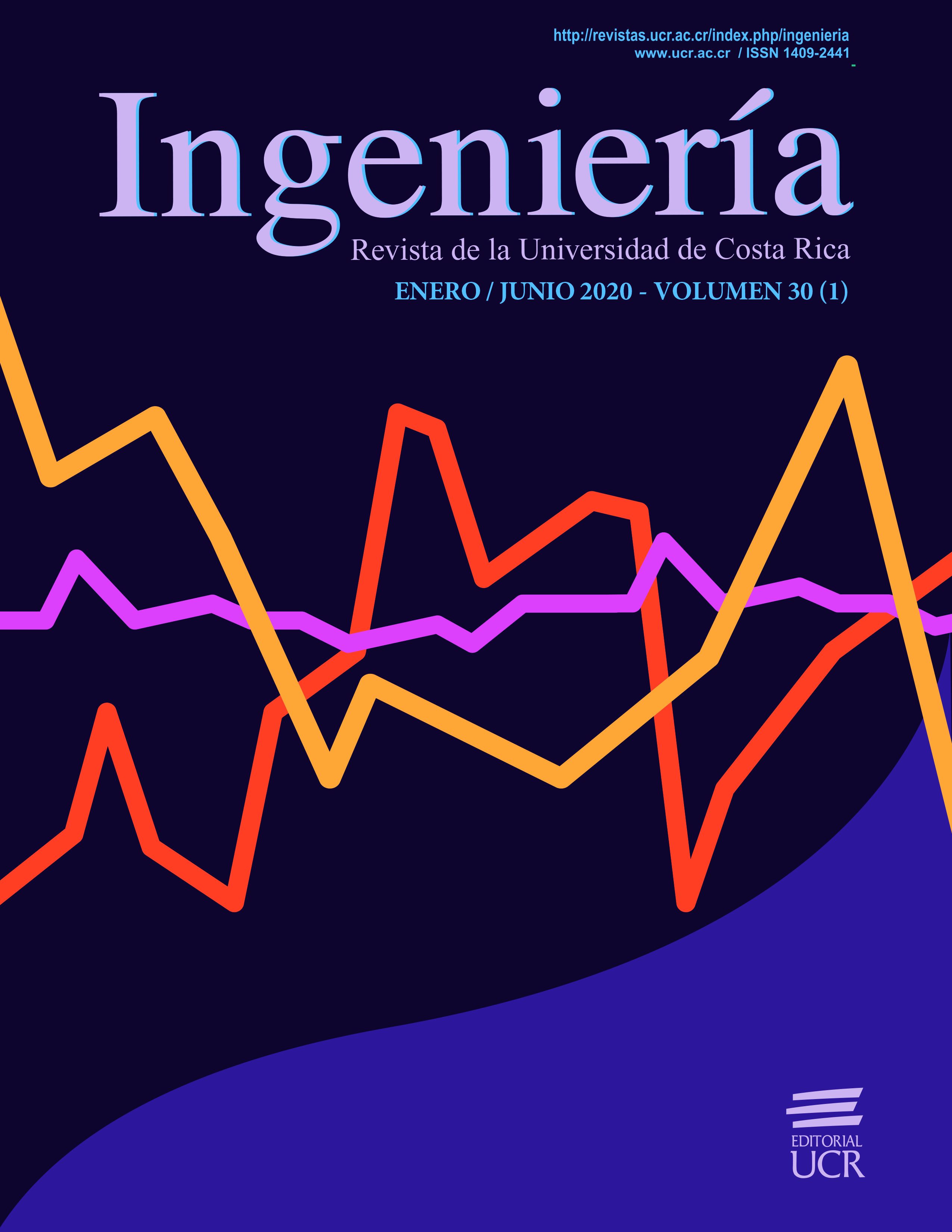Abstract
The main objective of this study was to determinate the effect of the temperature, methanol concentration and catalyst ratio, in the rate of hydrogen production, using aqueous phase reforming reaction. The catalyst used was impregnated nickel in commercial alumina.
The catalyst was produced by the incipient impregnation method. After it, was calcined, and reduced, using hydrogen (5 %), with a flow of 250x10-3 l·min-1, at 723.15 K (450 °C) and for 4 h. The synthesized catalyst was characterized, and the surface area, crystallinity and composition were determined, as well as micrographs were taken to verify its morphology.
To find the effect of the variables in the rate of hydrogen production, a Taguchi L8 statistical design was used, with three variables and two levels: temperature 473.15 K y 498.15 K, methanol concentration 2% v/v y 6% v/v; and catalyst fraction used 2,5 % m/m y 5 % m/m.
It was found that the catalyst used has an area of 88 m2/ g, with little crystallinity, being considered amorphous, with a nickel percentage approximately of 3%, as selected in the methodology. According to the statistical design, it was observed that only the temperature is significant in the rate of hydrogen production and the optimal temperature that favors hydrogen production is 498.15 K, while the concentration of methanol or amount of catalyst is not significant in the APR process.



